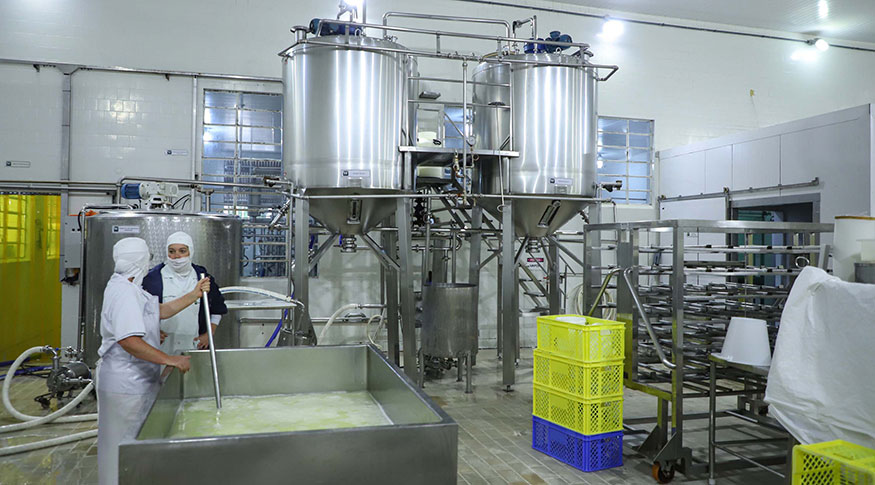IPP
Industry prices grow 0.45% in May, fourth positive result in a row
June 27, 2024 09h00 AM | Last Updated: July 01, 2024 07h42 PM

National industry prices grew 0.45% in May compared to the April result, which had been 0.67%. This was the fourth positive result in a row in the monthly indicator. Thus, the Producer Price Index (IPP) accumulates increases of 1.37% in the year and 0.17% in 12 months. In May last year, the change compared to the previous month was -2.88%. The data was released today (27) by the IBGE.
“In addition to recording the fourth positive change in a row in the monthly index, industry prices in May represent the highest cumulative result in the year, with 1.37%, since May 2022, when it had been 9.03%. The change of 0.17% in the cumulative index over 12 months is the first positive result since February 2023, that is, there was a break in a series of 14 negative results”, highlights IBGE Manager of Analysis and Methodology, Alexandre Brandão.
Among the 24 industrial activities investigated by the survey, 15 showed positive price changes in May compared to the previous month. In comparison, 21 activities had presented higher average prices in April in this same indicator. The four most intense changes were in mining and quarrying industries (-4.98%); electrical machinery, apparatus and materials (1.91%); food (1.88%); and wearing apparel (1.76%).
Among the sectors with the main influences on the general index of 0.45% registered in May, four stand out: food, with an influence of 0.45 percentage points (pp), mining and quarrying industries (-0.25 pp), basic metals ( 0.09 pp) and paper and pulp (0.06 pp).
“It is worth highlighting that the food sector, which showed a change of 1.88%, the highest result since October 2023, was mainly influenced by residues from soybean extraction, milk and rice, while sugar showed a sharper price drop”, highlights Mr. Brandão. “In the case of soybean residues, there is strong international demand, which is combined with the depreciation the real has been undergoing.”
The IBGE researcher also highlights that, in the case of the increase in milk prices, adverse weather conditions, particularly drought and heat, reduced production in the dairy farms. Looking at the list of changes in the month, three products are derived from milk and suffered from this drought situation: Sterilized / UHT / Long Life Milk; Chilled and/or preheated milk; and Fresh cheeses (uncured): mozzarella, ricotta, etc. (except Minas cheese).
“In the case of rice, the recent situation of floods in Rio Grande do Sul caused logistical problems in the production flow, which caused price rise”, analyzes Mr. Brandão. “On the other hand, the sugar cane harvest explains the drop in the price of the product observed in May”, he adds.
The other industrial activity that exerted a strong influence in May, in this case negative by 0.25 pp, was mining and quarrying industries, with a drop of 4.98%. It was the third consecutive drop and the most intense since November 2023, when it registered an index of -7.09%.
“This result for the mining and quarrying industries has the particularity that the two largest products, crude petroleum oil and iron ore, are changing in the same direction. This had not been happening, on the one hand, since February, when both showed a positive change, and since November 2023, on the other, when both showed a negative change”, highlights the manager.
Among the major economic categories, the price change in May compared to April 2024 had the following impact: 0.07% change in capital goods (BK); -0.20% in intermediate goods (BI); and 1.50% in consumer goods (BC), with the change observed in durable consumer goods (BCD) being 0.01%, while in semi-durable and non-durable consumer goods (BCND), it was 1 .81%.
Also in this indicator, the main influence was exerted by consumer goods, whose weight in the composition of the general index was 37.23% and accounted for 0.55 pp of the 0.45% change in mining and quarrying and manufacturing industries. The list is completed by intermediate goods, with an influence of -0.11 pp and capital goods, with 0.01 pp.
In the case of consumer goods, the influence observed in May is divided into 0.00 pp, which was due to the change in the prices of durable consumer goods, and 0.55 pp associated with the change in semi-durable and non-durable consumer goods. In this case, the increase in the price of dairy products (notably “Sterilized / UHT / Long Life Milk” and “Fresh cheeses (uncured): mozzarella, ricotta, etc. (except Minas cheese)”), rice, beef and roasted coffee, among foods, and ethyl alcohol and medicines was an important factor.
Learn more about IPP
The IPP tracks the average change in sales prices received by domestic producers of goods and services, and their evolution over time, signaling short-term inflationary trends in the country.
It is an essential indicator for macroeconomic monitoring and a valuable analytical tool for decision makers, either public or private.
The survey investigates, in just over 2,100 companies, the prices received by producers, exempt from taxes, tariffs and freight, defined according to the most common commercial practices. Around 6 thousand prices are collected monthly. The complete IPP tables are available on Sidra database. The next release of the IPP, for June, will be on July 30th.




















